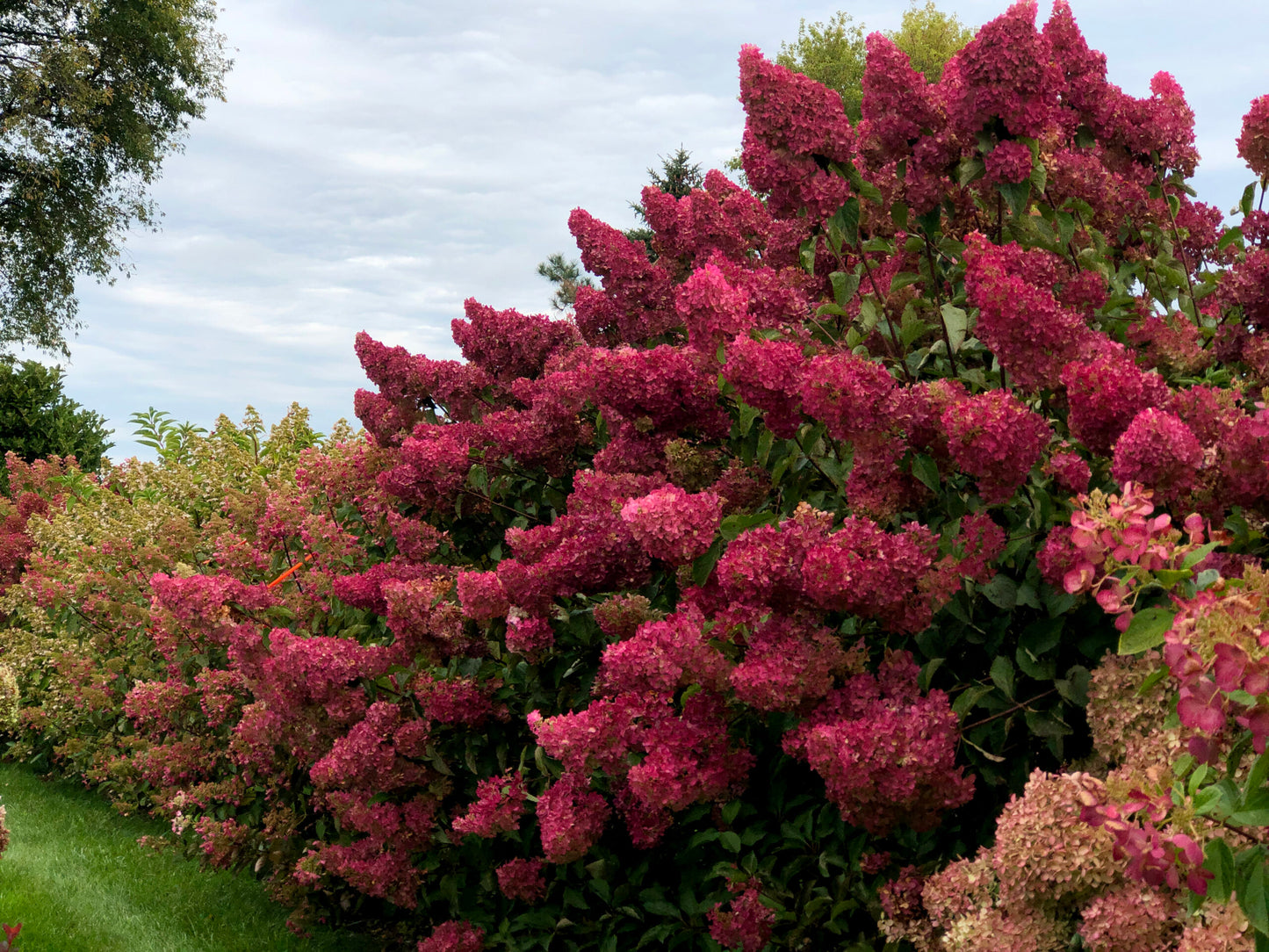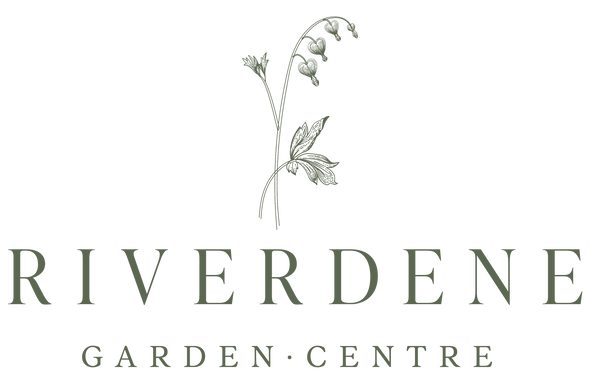Riverdene Garden Center
Berry White Hydrangea
Berry White Hydrangea
Couldn't load pickup availability
Hydrangea paniculata ‘Renba’
Berry White® Hydrangea is a cold-hardy, long-blooming, and low-maintenance panicle hydrangea known for its large cone-shaped blooms that transition from white to deep pink-red as the season progresses. With strong stems, vibrant color shifts, and reliable performance, this hydrangea is perfect for hedges, foundation plantings, mixed borders, and specimen plantings in Southwest Saskatchewan.
Planting & Location
- Hardiness Zone: 3-8 (highly winter-hardy, ideal for prairie climates)
- Mature Size: 6-7 feet tall, 4-5 feet wide
- Growth Rate: Fast (up to 24 inches per year)
- Sunlight Needs: Full sun to partial shade (best flowering in 6+ hours of direct sun)
-
Soil Preference:
- Prefers well-drained, loamy soil.
- Tolerates clay, sandy, and slightly acidic to neutral soils.
- Avoid overly wet or waterlogged conditions, as hydrangeas dislike standing water.
- Spacing: 4-5 feet apart for hedging, 6+ feet apart for individual shrubs.
Watering
- Young Plants (First Year): Water deeply 2-3 times per week to establish roots.
- Established Shrubs: Drought-tolerant but benefits from weekly deep watering in dry conditions.
- Avoid Overwatering: Prefers moderate soil moisture but does not tolerate standing water.
Fertilizing
- First Year: No fertilizer needed—focus on root establishment.
-
Mature Shrubs:
- Apply a slow-release balanced fertilizer (e.g., 10-10-10) in early spring to encourage healthy growth and flowering.
- Organic alternative: Compost or well-rotted manure in spring.
- Avoid high-nitrogen fertilizers, as they promote leafy growth at the expense of flowers.
Pruning & Maintenance
- Best Time to Prune: Late winter to early spring, before new growth starts.
-
How to Prune:
- Berry White® blooms on new wood, so pruning in early spring will not reduce blooms.
- Remove dead, damaged, or weak branches to promote healthy growth.
- Trim lightly to shape the plant and maintain size.
- For larger blooms, thin out smaller stems to allow stronger growth on fewer branches.
Flowers, Foliage & Seasonal Interest
- Bloom Time: Mid-summer to fall (July-September)
-
Flower Color Progression:
- Early season: Pure white blooms
- Mid-summer: Soft blush pink tones begin developing
- Late summer to fall: Deep raspberry-pink to red hues
- Fragrance: Mild to none
-
Foliage:
- Spring & Summer: Deep green, oval leaves
- Fall: Leaves take on a golden-bronze hue before dropping
Pest & Disease Management
Resistant to: Drought, urban pollution, and most pests
Common Pests:
-
Aphids – May cause curled leaves and sticky honeydew.
- Solution: Spray with insecticidal soap or introduce ladybugs.
-
Spider Mites – Can cause leaf discoloration in hot, dry conditions.
- Solution: Hose off with water or use insecticidal soap.
Common Diseases:
-
Powdery Mildew – White fungal coating on leaves in humid conditions.
- Solution: Improve airflow and apply fungicide if needed.
-
Leaf Spot (Fungal or Bacterial) – Brown spots on foliage.
- Solution: Avoid overhead watering and remove infected leaves.
Winter Protection
- Highly winter-hardy—no special protection needed in Zone 3-8.
- Mulching: Apply 2-4 inches of mulch around the base (not touching the stems) to insulate roots.
- Pruning in fall is not necessary—leave flower heads for winter interest and cut back in early spring.
Landscape Uses
Perfect for specimen plantings, hedges, and foundation plantings
Compact size makes it ideal for small gardens and urban landscapes
Long-lasting blooms with a striking white-to-pink transition
Drought-tolerant once established
Great for fresh-cut and dried flower arrangements
Additional Notes:
- Berry White® Hydrangea is an improved panicle hydrangea with deeper red tones and strong stems to prevent flopping.
- Lifespan: 20+ years with proper care.
- Works well in modern landscapes, cottage gardens, mixed borders, and as a focal point.
Photo courtesy of First Editions
Share


